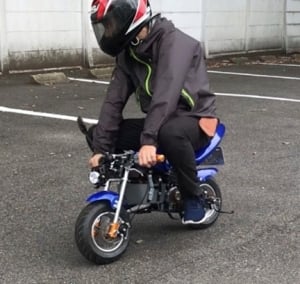Hello, I’m Takahashi at Renesas Electronics. I am working on proposing various solutions for Renesas’ automotive control processor products (MCU) to customers who develop electronic control units (ECU) for automobiles. In my private life, I build a small electric bike, register the number officially and enjoy riding it on public roads. (This is legal, of course.) I use small MCUs to control my own electric bike. However, when changing the control software to match the characteristics of the motor, it is necessary to connect it to a computer and rewrite the software on the MCU Flash memory, which is troublesome and inconvenient.
The control software of the MCU is also rewritten in various situations in the customer's ECU. It may be necessary for users to rewrite not only at the time of shipment from the factory but also after shipping to improve the control software of the vehicle you use. This is inconvenient because users must bring the vehicle to the factory or dealer.
Renesas Electronics MCUs are addressing that issue with the Over-the-Air (OTA) technology, which can rewrite the update software by wireless communication.
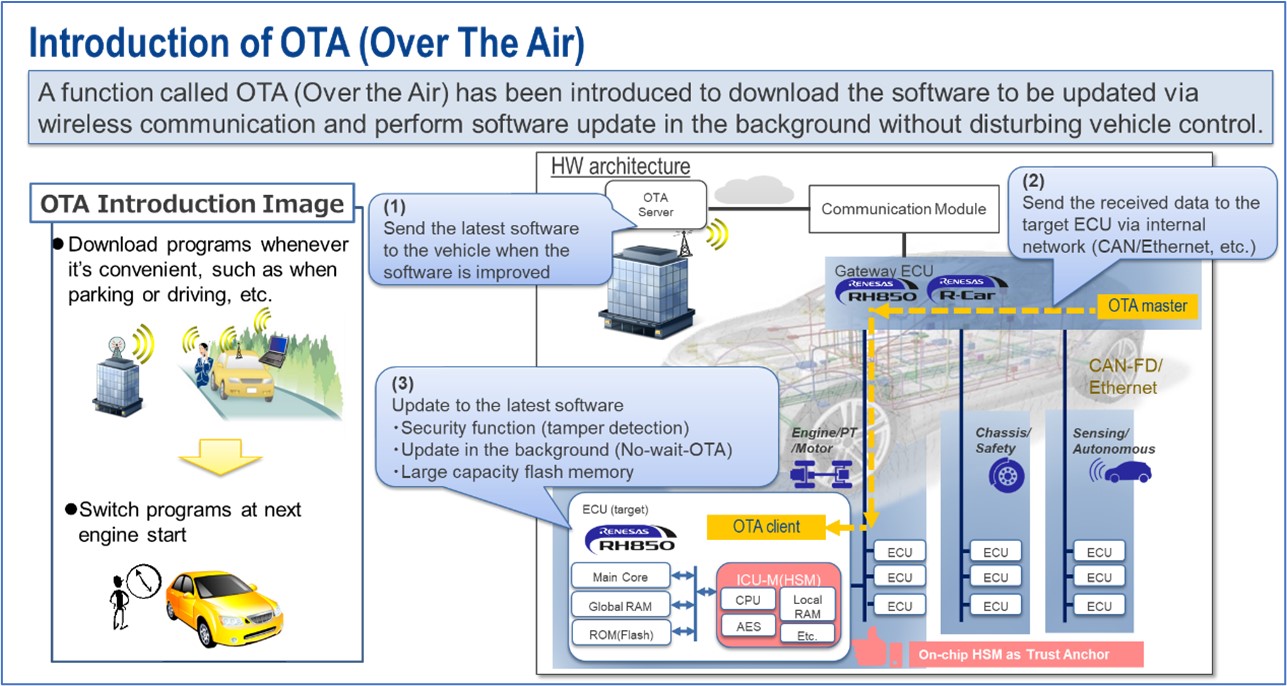
OTA has several software update methods. The methods called “Wait OTA” and “Semi-non wait OTA” have some disadvantages that software cannot be rewritten while the MCU is running, or even if the software can be rewritten while the MCU is running, an external Flash memory is required outside the MCU. Renesas Electronics provides MCUs with Flash memory that can set multiple banks that separate the software area to be placed. These MCUs use the “Non-wait OTA” method which allows software in one bank to run while software from the other bank is updated. With the “Non-wait OTA” method, the software can be downloaded to the vehicle to be updated via wireless communication, and the software can be updated in the background without interfering with the control of the running vehicle.
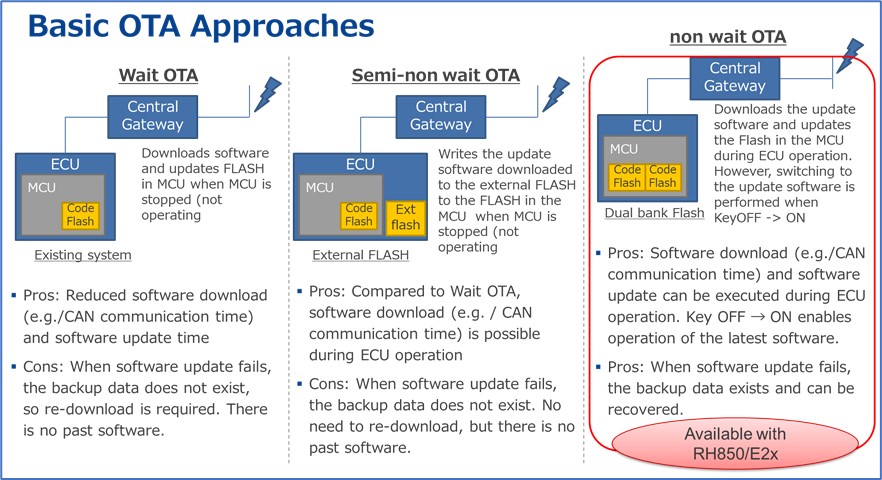
We have prepared a demonstration of this OTA function using the E2x, the RH850 series of automotive MCUs from Renesas Electronics. The demonstration assumes that the car receives the updated software in the communication module and updates the software to the MCU to be updated via the gateway ECU of the in-vehicle network. The OTA client writes the update software to Bank2 of the Flash memory while running the current software on Bank1 of the Flash memory. During this write, the OTA client continues the motor control. When the write is completed, the OTA client records the setting to execute the software stored in Bank2 of the Flash memory at the next startup to the non-volatile Data Flash memory. Cars with updated software written by OTA can be started with the updated software by resetting the vehicle's ECU. We also have an introduction video showing how the OTA demonstration works. Check it out!
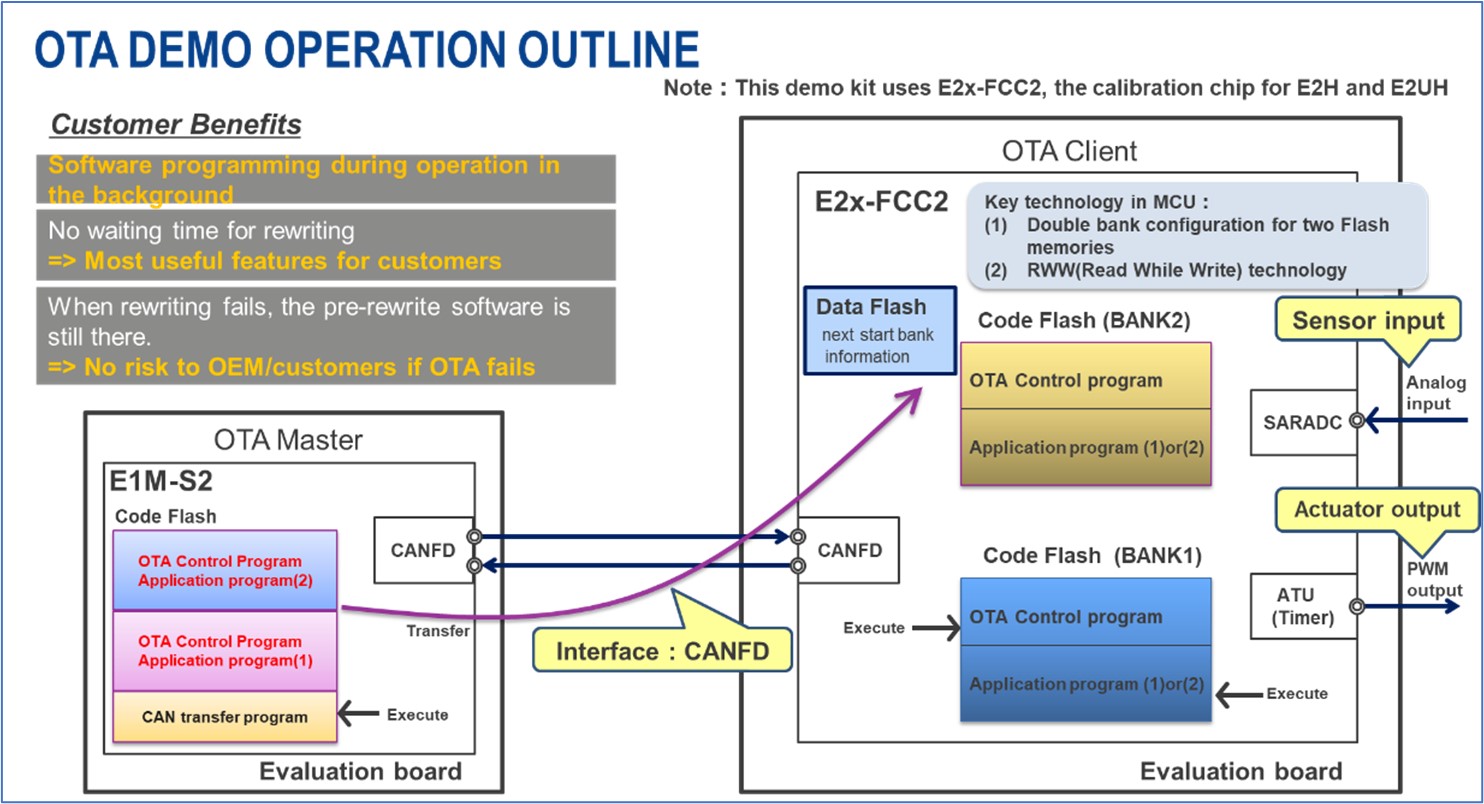
The actual demonstration kit is handmade by me, and the software to run it is also handmade by my great team of colleagues. We packed the briefcase with an evaluation board with the RH850/E1x as an OTA master, one with the RH850/E2x as an OTA client, and a model of a car that operates the motor speed with a pedal that imitates the accelerator pedal of a car. Currently, we do not have a chance to show you directly because of the coronavirus matters, but we are happy to hear if the situation improves, so please feel free to contact us. We also have an introductory video summarizing our support for OTA technology in a more concise and accessible way than this blog.
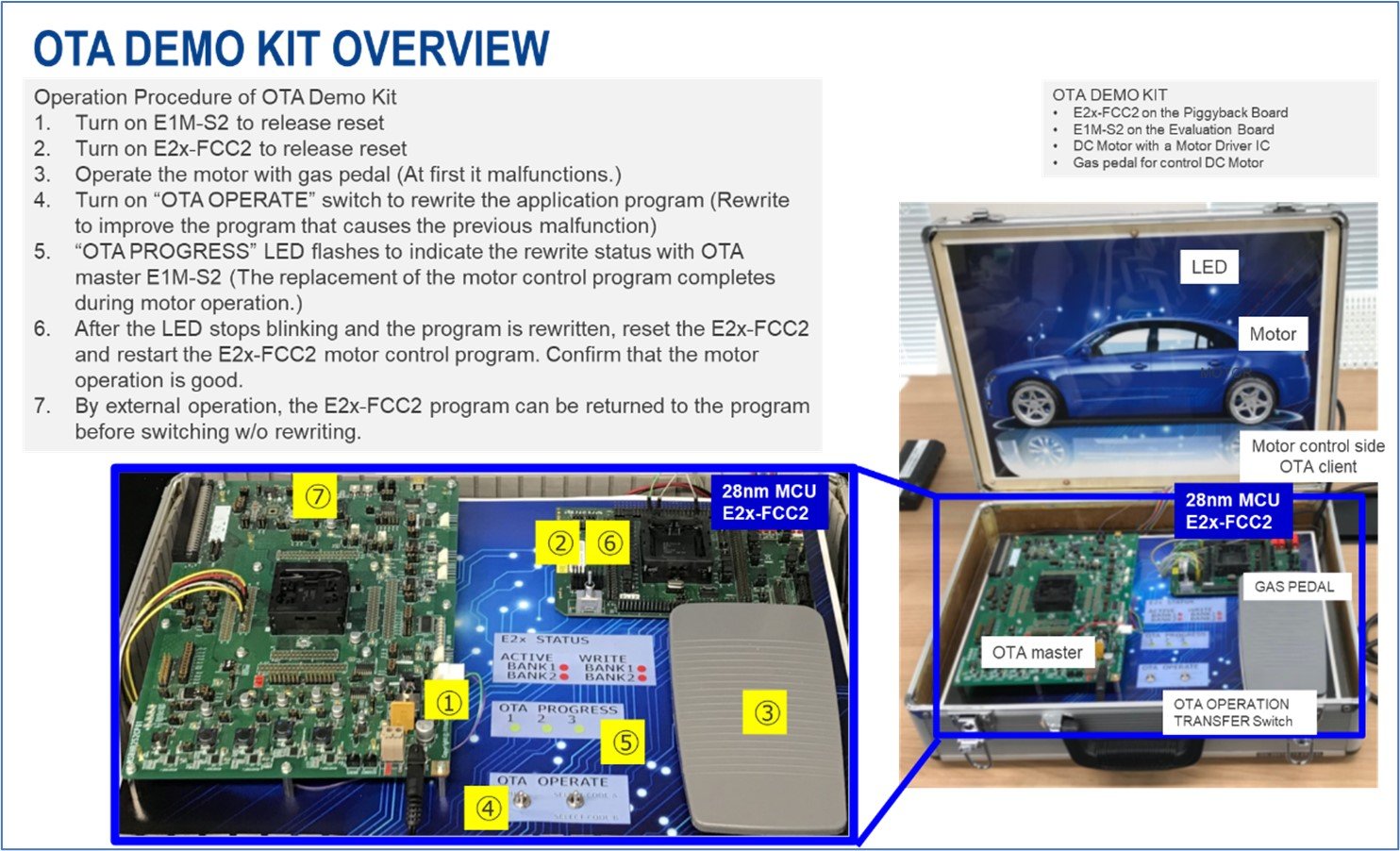
Although this OTA demonstration is limited to the use of some of the functions of Renesas Electronics' MCU, we have prepared some materials that summarize the implementation method using RH850/E1x and E2x used in this demonstration so that you can try it out easily. If you are interested, please feel free to contact us.
Also, if you are interested in Renesas Electronics solutions and winning combinations, please visit the automotive solutions page on our website.
Finally, the handmade electric bike I mentioned at the beginning of this article is being improved and is now under construction to become Japan's smallest public road-going electric pocket bike using a brushless in-wheel motor. When the electric bike is completed using our MCU, I will report back to you in this blog.

